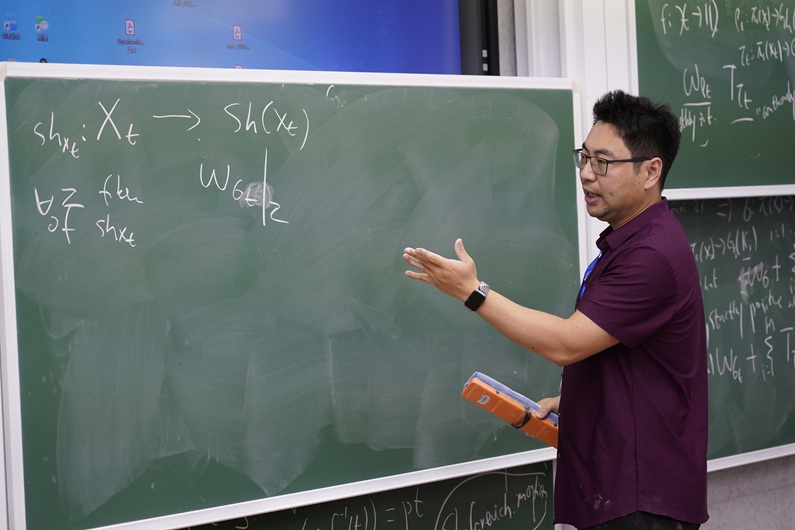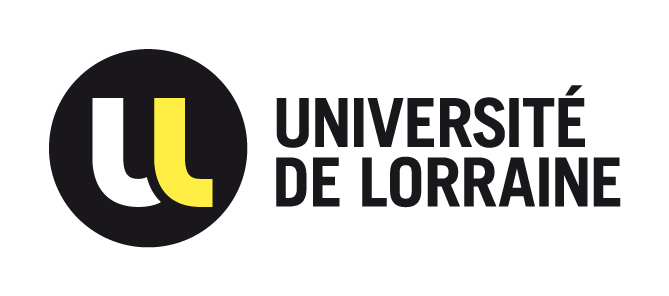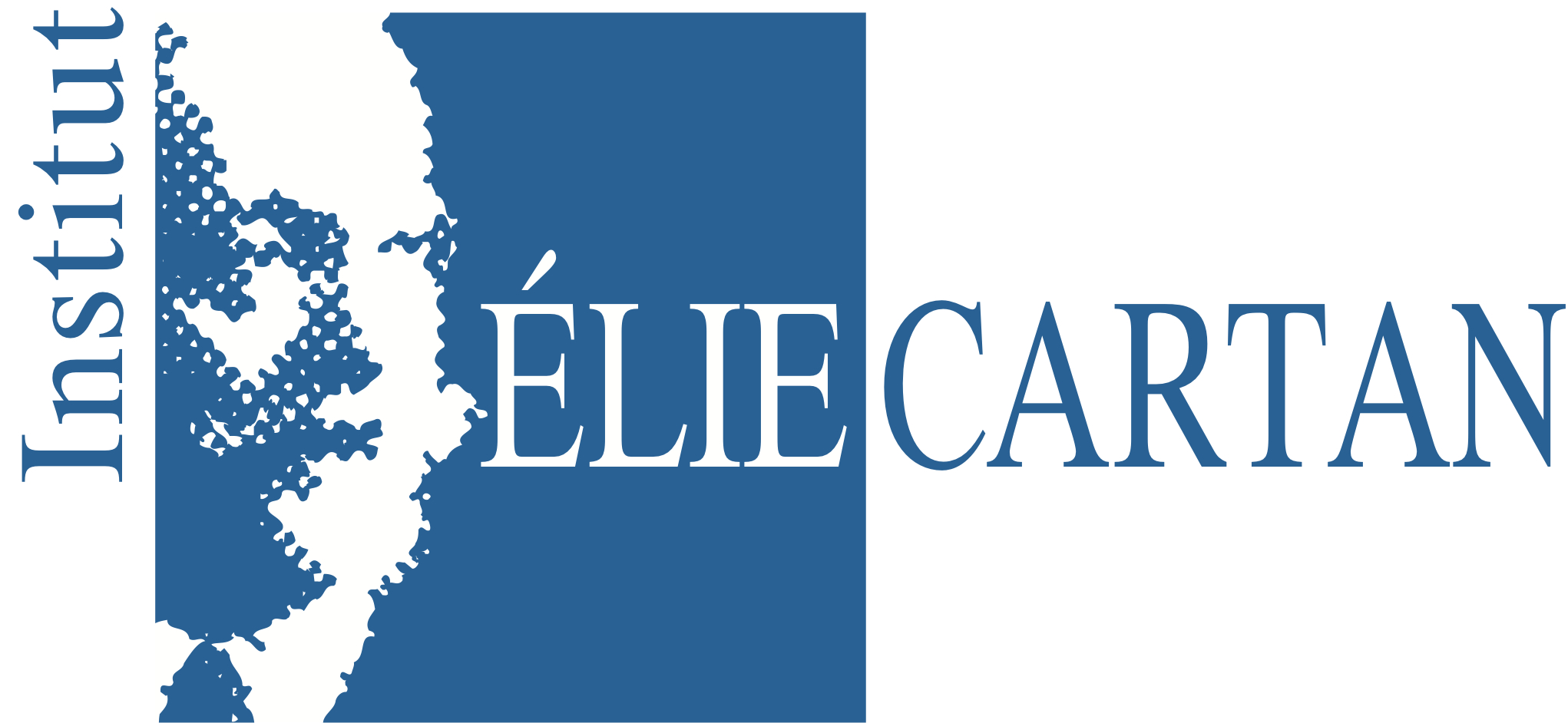Reductive Shafarevich Conjecture. (joint work with Katsutoshi Yamanoi, Ludmil Katzarkov) arXiv:2306.03070
Abstract
In this paper, we present a more accessible proof of Eyssidieux's proof of the reductive Shafarevich conjecture in 2004, along with several generalizations. In a nutshell, we prove the holomorphic convexity of the covering of a projective normal variety \(X\), which corresponds to the intersection of kernels of reductive representations \(\varrho:\pi_1(X)\to {\rm GL}_N(\mathbb{C})\). Our approach avoids the necessity of using the reduction mod p method employed in Eyssidieux's original proof. Moreover, we extend the theorems to singular normal varieties under a weaker condition of absolutely constructible subsets, thereby answering a question by Eyssidieux, Katzarkov, Pantev, and Ramachandran. Additionally, we construct the Shafarevich morphism for reductive representations over quasi-projective varieties unconditionally, and proving its algebraic nature at the function field level.
Hyperbolicity and fundamental groups of complex quasi-projective varieties. (joint work with Benoit Cadorel and Katsutoshi Yamanoi) arXiv:2212.12225 Oberwolfach report
Abstract
It is natural to ask how fundamental groups \(\pi_1(X)\) of complex quasi-projective varieties \(X\) determine their hyperbolicity. In this paper we address this question when there is a linear representation \(\varrho:\pi_1(X)\to GL_N(\mathbb{C})\). First, if $\varrho$ is big and the Zariski closure of \(\varrho\big(\pi_1(X)\big)\) in \(GL_N(\mathbb{C})\) is a semisimple algebraic group, then we prove that there is a proper Zariski closed subset \(Z\subsetneqq X\) such that any closed irreducible subvariety \(V\) of \(X\) not contained in $Z$ is of log general type; any holomorphic map from the punctured disk \(\Delta^*\) to \(X\) with image not contained in \(Z\) does not have essential singularity at the origin. In particular, \(X\) is of log general type and all entire curves in $X$ lie on \(Z\). We provide examples to illustrate that the condition is sharp.
Second, if \(X\) is a special or hyperbolically special quasi-projective manifold in the sense of Campana, we prove that \(\varrho\big(\pi_1(X)\big)\) is virtually nilpotent. We also construct examples to show that this result is optimal, thus disproving Campana's abelianity conjecture for quasi-projective manifolds.
To prove the above theorems we develop new feature in non-abelian Hodge, geometric group and Nevanlinna theories. Along the way we prove the strong Green-Griffiths-Lang conjecture for quasi-projective varieties \(X\) admitting a morphism \(a:X\to A\) with \(\dim X=\dim a(X)\)
where \(A\) is a semi-abelian variety; a reduction theorem for Zariski dense representations \(\pi_1(X)\to G(K)\) where \(G\) is a reductive group over a non-Archimedean local field \(K\).
Pluriharmonic maps into buildings and symmetric differentials. (joint work with D. Brotbek, G. Daskalopoulos and C. Mese) arXiv:2206.11835
Abstract
In this paper we develop some non-abelian Hodge techniques over complex quasi-projective manifolds \(X\) in both archimedean and non-archimedean contexts. In the non-archimedean case, we first generalize a theorem by Gromov-Schoen: for any Zariski dense representation \(\rho:\pi_1(X)\to G(K)\), where \(G\) is a semisimple algebraic group defined over some non-archimedean local field $K$, we construct a \(\rho\)-equivariant harmonic map from \(X\) into the Bruhat-Tits building \(\Delta(G)\) of \(G\) with some suitable asymptotic behavior. We then construct logarithmic symmetric differential forms over \(X\) when the image of such \(\rho\) is unbounded. Our main result in the archimedean case is that any semisimple representation \(\sigma: \pi_1(X)\to\operatorname{GL}_N(\mathbb{C})\) is rigid provided that \(X\) does not admit logarithmic symmetric differential forms. Furthermore, such representation \(\sigma\) is conjugate to \(\sigma':\pi_1(X)\to\operatorname{GL}_N(\mathcal{O}_L)\) where \(\mathcal{O}_L\) is the ring of integer of some number field \(L\), so that \(\sigma'\) is a complex direct factor of a \(\mathbb{Z}\)-variation of Hodge structures.
As an application we prove that a complex quasi-projective manifold \(X\) has nonzero global logarithmic symmetric differential forms if there is linear representation \(\pi_1(X)\to\operatorname{GL}_N(\mathbb{C})\) with infinite images.
Picard hyperbolicity for manifolds admitting nilpotent harmonic bundles. (joint work with Benoît Cadorel). arXiv:2107.07550
Abstract
For a quasi-compact Kähler manifold \(U\) endowed with a nilpotent harmonic bundle whose Higgs field is injective at one point, we prove that \(U\) is pseudo-algebraically hyperbolic, pseudo-Picard hyperbolic, and is of log general type. Moreover, we prove that there is a finite unramified cover \(\tilde{U}\) of \(U\) from a quasi-projective manifold \(\tilde{U}\) so that any projective compactification of \(\tilde{U}\) is pseudo-algebraically hyperbolic, pseudo-Picard hyperbolic and is of general type. As a byproduct, we establish some criterion of pseudo-Picard hyperbolicity and pseudo-algebraic hyperbolicity for quasi-compact Kähler manifolds.
▶ Other Preprints
-
Big Picard theorem for moduli spaces of polarized manifolds. arXiv:1912.11442. Part of this preprint has been merged into Preprint 12.
Abstract
Consider a smooth projective family of complex polarized manifolds with semi-ample canonical sheaf over a quasi-projective manifold \(V\). When the associated moduli map \(V\to P_h\) from the base to coarse moduli space is quasi-finite, we prove that the generalized big Picard theorem holds for the base manifold \(V\): for any projective compactification \(Y\) of \(V\), any holomorphic map \(f:\Delta-\{0\}\to V\) from the punctured unit disk to \(V\) extends to a holomorphic map of the unit disk \(\Delta\) into \(Y\). This result generalizes our previous work on the Brody hyperbolicity of \(V\) (i.e. there are no entire curves on \(V\)), as well as a more recent work by Lu-Sun-Zuo on the Borel hyperbolicity of \(V\) (i.e. any holomorphic map from a quasi-projective variety to \(V\) is algebraic). We also obtain generalized big Picard theorem for bases of log Calabi-Yau families.
-
Pseudo Kobayashi hyperbolicity of base
spaces of families of minimal projective
manifolds with maximal
variation. arXiv:1809.05891 This preprint has been merged into Publication 1. Abstract
In this paper we prove that every quasi-projective base space \(V\) of
smooth family of minimal projective manifolds with maximal variation is
pseudo Kobayashi hyperbolic, that is, \(V\) is Kobayashi hyperbolic modulo a
proper subvariety \(Z\subsetneq V\). In particular, every nonconstant
entire curve \(f:\mathbb{C}\to V\) has image \(f(\mathbb{C})\) on
a proper subvariety \(Z\subsetneq V\). As a direct consequence, we prove the Brody hyperbolicity of moduli spaces of minimal projective manifolds, which prove a conjecture by Viehweg-Zuo in 2003.
-
Hyperbolicity of coarse moduli spaces and isotriviality for certain families. arXiv:1908.08372
Abstract
In this paper, we prove the Kobayashi hyperbolicity of the coarse moduli spaces of canonically polarized or polarized Calabi-Yau manifolds in the sense of complex V-spaces (a generalization of complex V-manifolds in the sense of Satake). As an application, we prove the following hyperbolic version of Campana's isotriviality conjecture: for the smooth family of canonically polarized or polarized Calabi-Yau manifolds, when the Kobayashi pseudo-distance of the base vanishes identically, the family must be isotrivial, that is, any two fibers are isomorphic. We also prove that for the smooth projective family of polarized Calabi-Yau manifolds, its variation of the family is less than or equal to the essential dimension of the base.
-
Hyperbolicity of bases of log Calabi-Yau
families. arXiv:1901.04423 hal-02266744 Abstract
We prove that for any maximally varying, log smooth family of Calabi-Yau klt pairs, its quasi-projective base is both of log general type, and pseudo Kobayashi hyperbolic. Moreover, such a base is Brody hyperbolic if the family is effectively parametrized.
▶ Miscellaneous
▶ Memoirs
▶
Grant
| ANR JCJC Grant:
Kähler manifolds with non-positive curvature : families and special subvarieties. 2021-2025 (Homepage)
Members: Henri Guenancia (CNRS-Toulouse, project coordinator), Junyan Cao (Nice), Benoit Cadorel (Nancy), Ya Deng (CNRS-Nancy) |
▶ Recent and upcoming talks (selected)
-
Date: August 23, 2025
Location: YMSC, Beijing
Title: Deformation of algebraic varieties with big fundamental groups
-
Date: August 3-5, 2025
Location: ShanghaiTeich University
Mini-Course: Shafarevich Conjecture and its applications
-
Date: July 31–August 2, 2025
Location: Westlake University
Mini-Course: Topology of complex algebraic varieties
-
2025 Summer Research Institute in Algebraic Geometry
Date: July 14-18, 2025
Location: Colorado, US
Title: Topology of complex algebraic varieties via analytic methods
-
COMPLEX GEOMETRY AND BEYOND
Date: May 31 -June 4 2025
Location: East China Normal University, Shanghai, China
Title: Deformation of Algebraic Varieties with Big Fundamental Groupss
-
Séminaire de géométrie complexe
Date: 24 Mar 2025
Location: IECL, Nancy
Title: Deformation of Varieties with Big Fundamental Groupss
-
Humboldt Arithmetic Geometry Seminar
Date: 19 Nov 2024
Location: Berlin
Title: Euler Characteristic of Algebraic Varieties
-
Séminaire de géométrie algébrique
Date: 14 Nov 2024
Location: IMJ-PRG
Title: Euler Characteristic of Algebraic Varieties
-
Upper-Rhine and Tributaries
Algebraic Geometry Seminary
Date: 25 June 2024
Location: Strasbourg
Title: On the universal covering of algebraic varieties
-
Workshop on Lagrangian fibrations and Nevanlinna theory
Date: 18-20 December 2023
Location: Nice
Title: Holomorphic curves in algebraic varieties of maximal Albanese dimension (after Yamanoi)
-
Séminaire d'algèbre, topologie et géométrie
Date: 30 Nov, 2023
Location: Nice
Title: The Shafarevich Conjecture, Hyperbolicity, and Its Applications
-
Workshop on Complex Geometry
Date: 24-27 October, 2023
Location: Hong Kong
Title: Constructing Shafarevich morphism for representations in positive characteristic and hyperbolicity
-
Séminaire de géométrie complexe, Institut Elie Cartan de Lorraine
Date: 16 October 2023
Location: Nancy
Title: Shafarevich morphism for linear representations in positive characteristic and hyperbolicity
-
Mini-course: Non-Abelian Hodge Theories and the Reductive Shafarevich Conjecture
Date: 24/25/28/29 August 2023
Location: YMSC, Tsinghua
-
International Workshop on Several Complex Variables, Complex Geometry and Diophantine Geometry
Date: 14-18 August, 2023
Location: Institute of Mathematics, Academia Sinica
Title: Green-Griffiths-Lang Conjecture for Algebraic Varieties with Big Fundamental Groups
-
Komplexe Analysis
Date: 9 - 14 Apr 2023
Location: Oberwolfach
Title: Fundamental Groups and Hyperbolicity of Quasi-Projective Varieties
▶ Events Organized
▶ Recent and coming Visit
-
Westlake University
Date: August 2025
-
Tsinghua University
Date: August 20-25 2025
-
ShanghaiTech University
Date: August 2025
-
Institut des Hautes Études Scientifiques (IHES)
Date: 31 March-26 April 2025
▶ Supervisions
Master
- Evelin Capatina (M2 mémoire à IRMA, 2024)
▶ Séminaire
| Séminaire de géométrie complexe a l'IECL Lien. |
My Webpage




